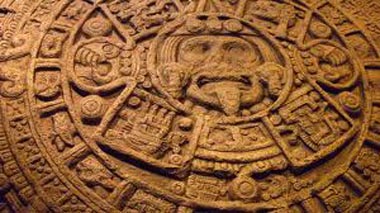 Now that 2012 has dawned, Mayans seem to be THE hot topic. The much hyped end of the world has everybody worried (relax, it’s not ending), and now Richard Thornton, a semi-amateur archaeologist, claims to have found a large Mayan ruin in North Georgia. Never mind that Georgia is over a thousand miles from the usual stomping grounds of the legendary, pre-Columbian civilization. Thornton reports that in 1999 archeologist working near Brasstown Bald,
Now that 2012 has dawned, Mayans seem to be THE hot topic. The much hyped end of the world has everybody worried (relax, it’s not ending), and now Richard Thornton, a semi-amateur archaeologist, claims to have found a large Mayan ruin in North Georgia. Never mind that Georgia is over a thousand miles from the usual stomping grounds of the legendary, pre-Columbian civilization. Thornton reports that in 1999 archeologist working near Brasstown Bald,
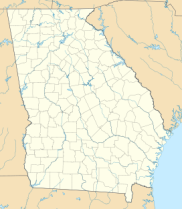
Georgia’s tallest mountain, uncovered structures of Mayan origin while excavating a site called Kenimer Mound. The Mound appears to be a simple hill, but is actually a five-sided pyramid built over a thousand years ago, approximately 900 CE (Common Era).
Mark Williams of the University of Georgia, the leader of the team, reported finding 154 stone masonry buildings and walls for agricultural terraces. They also found evidence for a sophisticated irrigation system. Based on the similarities between the five-side pyramid in Georgia and strikingly similar structures built by the Mayans, as well as similarities in the terraces and other buildings, Thornton concluded that this ancient city must have been built by the Mayans. He further buttressed his claim by noting the many similarities between the language of the Mayans and that of the Native Americans of the Southeastern U.S.
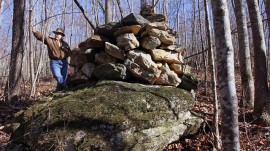
The idea of a lost city, built by the legendary Mayans, and rediscovered in Georgia is an intriguing one. It appeals to the inner Indiana Jones in all of us. The problem is that it runs smack up against one of the most important concepts in science, Occam’s razor. Named after the Franciscan friar, Father William of Ockham, this principle states when looking at competing hypotheses, the simplest one is the most likely to be correct. It’s  possible that a colony of Mayans emigrated en mass thousands of miles to the Southern United States, but it’s a distant possibility, at best. It would be a bit like an archeologist 1,000 years from now unearthing an ancient building with Greco-Roman columns and declaring it proof that America had been invaded by ancient Greeks. Even if he backed up his claim by noting all the English words with Greek roots, it would still be a long shot. There is a much simpler explanation for the ruins in Georgia, yet one no less fantastic, and it involves an equally wondrous lost civilization much closer to home, the Mississippians.
possible that a colony of Mayans emigrated en mass thousands of miles to the Southern United States, but it’s a distant possibility, at best. It would be a bit like an archeologist 1,000 years from now unearthing an ancient building with Greco-Roman columns and declaring it proof that America had been invaded by ancient Greeks. Even if he backed up his claim by noting all the English words with Greek roots, it would still be a long shot. There is a much simpler explanation for the ruins in Georgia, yet one no less fantastic, and it involves an equally wondrous lost civilization much closer to home, the Mississippians.
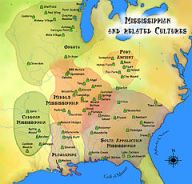 The Mississippians, sometimes known as Mound Builders, were a Native American civilization that flourished in what is now the South, Midwest and Eastern U.S from around 800 CE to 1500 CE. They had a sophisticated political and social system, highly developed agriculture and extensive trade networks stretching from the Atlantic to the Rockies. Their most distinctive feature was their large earthwork structures, the mounds that gave them their common name.
The Mississippians, sometimes known as Mound Builders, were a Native American civilization that flourished in what is now the South, Midwest and Eastern U.S from around 800 CE to 1500 CE. They had a sophisticated political and social system, highly developed agriculture and extensive trade networks stretching from the Atlantic to the Rockies. Their most distinctive feature was their large earthwork structures, the mounds that gave them their common name.
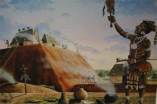
Their largest city, and no other term adequately describes it, was Cahokia. Located in what is now Collinsville, Illinois, near St. Louis, it featured multiple stepped pyramids, temples, plazas and canals. It was the largest city north of the Rio Grande. Cahokia boasted, at its height, a population of 15,000 people, comparable in size to London at the time. It was designated a World Heritage Site by UNESCO in 1982. The largest and most impressive structure in Cahokia is Monk’s Mound. It is a large stepped pyramid, standing 104 feet tall and covering over 14 acres.
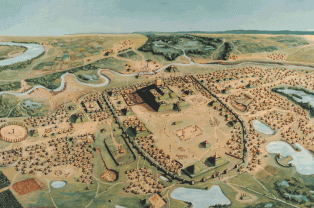
In addition to Cahokia, the Mississippians had many settlements including Angel Mounds in Indiana, Emerald Mounds in Mississippi, the Parkin Site in Arkansas, Spiro Mounds in Oklahoma and Etowah in Georgia. As magnificent as the civilization was, it underwent a sudden decline around 1500. A combination of drought and over forestation caused their maize based agricultural system to collapse. The final nail was driven into the Mississippian culture by the arrival of the Europeans. Spanish explorers, including Hernando do Soto, made contact with the native civilizations, and brought with them devastating diseases the Native Americans had no defense against, including small pox and measles.
Even under the twin pressures of famine and epidemic disease, the Mississippians didn’t disappear completely. They fled their disintegrating city states. Their descendants survived all that and went on to become the ancestors of many of today’s Native American cultures. These include the Cherokee, Chickasaw, Choctaw, Creek, Natchez, Osage and Seminole Nations, to name just a few. While there may have been some Mayan influence in the form of trade or occasional travelers, Mark Williams, who helped unearth the Georgia ruins, is quick to point out there is no substantial evidence for Mayan colonization as far north as the U.S..
So, if there was a sophisticated Native American civilization known for building enormous stepped pyramids, and it was documented to have had settlements in Georgia, why are people so quick to attribute a stepped pyramid uncovered in the same region to the Mayans? Part of it may be our inherent love of mystery. We’re easily titillated by images of brave archeologists uncovering enigmatic lost cities. It may also be that it makes a better headline. After all, Mayans do seem to be the topic on everyone’s lips these days. Maybe though, it’s something less benign. We have more distance from the tragic loss of the Mayans, thousands of miles in fact. The idea that a magnificent civilization was lost in our own back yard, hits much closer to home. Combine that with the knowledge that the civilization arose, not from some mysterious distant group, but from Native Americans, people we have portrayed for centuries, not as architects of mighty civilizations, but as uncivilized savages, and we start becoming uncomfortable. It’s not easy for many of us to look upon what was lost in our part of the Americas and think of the role that our European ancestors played in it. It’s easier to link it to a group that declined before the conquistadors ever got here.
On the other hand, maybe Thompson is right. Maybe the Mayans did migrate all the way to the Peach State and start building pyramids, but that’s a fairly complex explanation for what lies in the ruins. If we are to be true to Occam’s razor, it will require a lot more evidence before we can start giving that hypothesis any credence.
